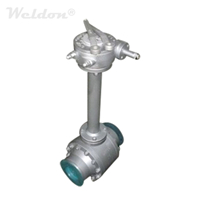Connected lighting expected to be "killer class" application
Guide:
There are a lot of discussions and experiments on IoT, but so far there is no "killer app" so far creating soaring demand, lower prices and a series of applications. But there are signs that Connected lighting might be such app, even though it may seem strange...
There is a saying: by 2020, the IoT (IoT) is expected to cover $number billion equipment. People believe that the internet of things will be ubiquitous, almost affecting all aspects of modern life. So far, the Internet application has been interesting, but it has not been able to show explosive growth in the market according to professional forecasts. There is not enough use cases with obvious economic benefits to initiate the self-reinforcing market growth of IoT.
The industry has made progress in reducing the cost of connectivity, but it is not fast enough for the growth of demand and the consequent decline in the number of production prices that have led to the actual market take-off. Tens of billions of of devices are expected to serve such a wide range of applications that the single bucket cannot achieve the required amount of significant production cost efficiencies. What is needed now is a single application that can itself produce billions of of devices.
Here's a look at the network lighting
Artificial lighting (artificial lighting) has been in use for thousands of years and electrical lighting began in 1880. Today, every continent, every country, almost every city, town and village in the earth has some form of electrical lighting, but the traditional incandescent lamps are high power consumption and the energy costs are escalating, prompting the industry and the government to seek low power alternatives. The compact fluorescent bulb (CFL) is the first of its kind, but it turns out that LEDs are the logical successor.
But Daniel Cooley, senior vice president and general manager of Silicon Labs, said in an interview that the increasingly successful LED lighting technology is paving the way for the ensuing network lighting. The point is that led manufacturers have to learn how to integrate electronic components into the bulb and how to reduce costs. "Once that happens," Cooley said, "It's easier to add more chips and create a of smart, cost-effective and luminous electronic products." ”
Network lighting will be the object of Internet killer application?
Cooley added that the business model of adding IoT-link technology to lighting has already had a positive rate of return on investment. Government-mandated drive to reduce energy consumption is a factor, and if you can control the bulb itself, it will be easier to meet the standards. If the lamp itself can be closed in the room (even in the hallway), or can be manipulated remotely through the mobile app, it can significantly reduce energy consumption.
The network lighting eliminates the need to connect the light switch directly to the luminaire. This not only reduces most of the wiring required, but also simplifies the electrical design of the building, while providing the installation flexibility of the lamps and switches.
But low cost is not the only potential benefit of net lighting. Bulb suppliers can integrate Bluetooth beacons into the bulb, providing a quick and easy way for retailers to simply set location services through the replacement of bulbs. The color and brightness of the network lighting can be set, then the house owner and the car dealers and restaurants and other retailers can control their environmental atmosphere.
Jul. 19, 2017
There are a lot of discussions and experiments on IoT, but so far there is no "killer app" so far creating soaring demand, lower prices and a series of applications. But there are signs that Connected lighting might be such app, even though it may seem strange...
There is a saying: by 2020, the IoT (IoT) is expected to cover $number billion equipment. People believe that the internet of things will be ubiquitous, almost affecting all aspects of modern life. So far, the Internet application has been interesting, but it has not been able to show explosive growth in the market according to professional forecasts. There is not enough use cases with obvious economic benefits to initiate the self-reinforcing market growth of IoT.
The industry has made progress in reducing the cost of connectivity, but it is not fast enough for the growth of demand and the consequent decline in the number of production prices that have led to the actual market take-off. Tens of billions of of devices are expected to serve such a wide range of applications that the single bucket cannot achieve the required amount of significant production cost efficiencies. What is needed now is a single application that can itself produce billions of of devices.
Here's a look at the network lighting
Artificial lighting (artificial lighting) has been in use for thousands of years and electrical lighting began in 1880. Today, every continent, every country, almost every city, town and village in the earth has some form of electrical lighting, but the traditional incandescent lamps are high power consumption and the energy costs are escalating, prompting the industry and the government to seek low power alternatives. The compact fluorescent bulb (CFL) is the first of its kind, but it turns out that LEDs are the logical successor.
But Daniel Cooley, senior vice president and general manager of Silicon Labs, said in an interview that the increasingly successful LED lighting technology is paving the way for the ensuing network lighting. The point is that led manufacturers have to learn how to integrate electronic components into the bulb and how to reduce costs. "Once that happens," Cooley said, "It's easier to add more chips and create a of smart, cost-effective and luminous electronic products." ”
Network lighting will be the object of Internet killer application?
Cooley added that the business model of adding IoT-link technology to lighting has already had a positive rate of return on investment. Government-mandated drive to reduce energy consumption is a factor, and if you can control the bulb itself, it will be easier to meet the standards. If the lamp itself can be closed in the room (even in the hallway), or can be manipulated remotely through the mobile app, it can significantly reduce energy consumption.
The network lighting eliminates the need to connect the light switch directly to the luminaire. This not only reduces most of the wiring required, but also simplifies the electrical design of the building, while providing the installation flexibility of the lamps and switches.
But low cost is not the only potential benefit of net lighting. Bulb suppliers can integrate Bluetooth beacons into the bulb, providing a quick and easy way for retailers to simply set location services through the replacement of bulbs. The color and brightness of the network lighting can be set, then the house owner and the car dealers and restaurants and other retailers can control their environmental atmosphere.
Jul. 19, 2017
Send your message to this supplier
Related Articles from the Supplier
How to evaluate LED lighting products
- Dec 12, 2014
GE splits lighting business to form LED unit
- Oct 14, 2015
Hong Kong International Lighting Fair
- Nov 17, 2014
Related Articles from China Manufacturers
The Application of Aluminum Alloys to Automobiles
- Mar 30, 2022
A Relief Well to Be Drilled in Gulf of Mexico
- Jul 30, 2013
Related Products Mentioned in the Article
Haichang Optotech Co., Limited
- https://www.haichanglight.com
- Address: Rm. 19C, Lockhart Ctr.,301-307 Lockhart Rd., Wan Chai, Hong Kong
- Phone: 86-28-87564796
- Business Type: Manufacturer, Industry & Trading,
Supplier Website
Source: https://www.haichanglight.com/connected-lighting-expected-to-be-killer-class-application.html










